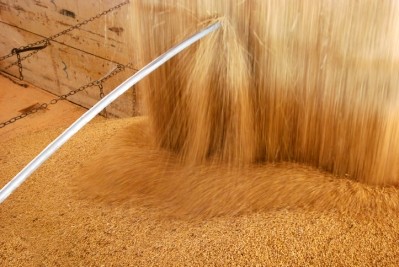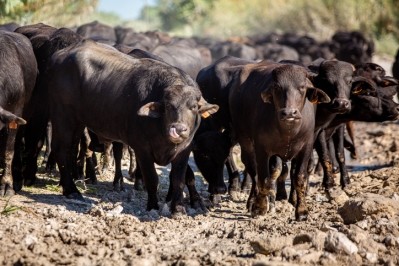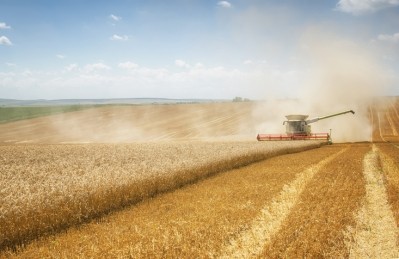WASDE maintains US corn, soy yields as prolonged harvest nears end

The US Department of Agriculture (USDA) released details of crop production and trade Tuesday [December 10] in December’s World Agricultural Supply and Demand Estimates (WASDE) report.
Brenda Boetel, professor and department chair of agricultural economics and agricultural marketing specialist, the University of Wisconsin, River Falls, said the report did not include an anticipated decrease in feed crop yields, but maintained export levels for corn.
“There was nothing that was exceptional in the report,” she told FeedNavigator, noting a lack of reaction from the markets to it.
Most analysts, ahead of the USDA report release, had anticipated a change to yield data for corn and soybeans and a potential decrease in export levels for corn, which were not reflected in WASDE, she said. However, changes to yield and acres harvested could still be seen in the January WASDE.
“Although they’re not as good as they’ve been in the recent past, crop yields are not down as much as they were anticipating,” she said.
Prices for feed grains could see slight increases going forward as harvest is ending and livestock will start to eat through the crops produced, added Boetel.
Going forward, the ratio of ending stocks to use would be an indicator to watch, she said.
“The biggest thing I’m concerned about is exports."
Trade uncertainty could have reduced US access to some international markets and that is hard to regain, especially as competition increases, she forecast.
Corn production
Overall, USDA maintained the US corn supply and use from earlier projections and anticipates that the season-average farm price will remain $3.85 per bushel.
Global production of coarse grains in 2019/20 was increased by 6.8m tons and forecasts expanding production and use along with higher ending stocks, the department said. Larger crops in China and Bolivia are expected to offset a drop in production in Canada.
Corn exports were lowered for Mexico, Canada and Laos, the department said. Ending stocks were increased based on production in China, Bolivia and Taiwan.
Soybean, oilseed projections
Expectations for US soybean production in 2019/20 remain consistent with previous projections, the USDA said. However, cottonseed production fell.
Use and supply of soybeans are also remaining steady, but the season-average soybean price dropped $0.15 to $8.85 a bushel while the price for soybean meal fell $15 to $310 per short ton, the department said.
Globally, oilseed production is expected to see a 3.3m ton boost as improved growth of soybeans, sunflower seed and peanuts are set to offset reduction in rapeseed and cottonseed, the department said. China, Russia and Ukraine saw increased production even as crops shrank in Canada and Pakistan.
Global soybean exports in 2019/20 were lowered by 0.6m tons based on a lower forecast for Argentina, the USDA said. Soybean imports fell for Vietnam as purchases of soybean meal increased.
Global ending stocks for soybeans are anticipated to be higher based on production in Brazil and China, the department added.
Wheat predictions
Overall the US outlook for wheat in 2019/20 anticipates smaller supplies with increased exports and reduced ending stocks, the USDA said. Wheat imports also fell by about 15m bushels.
US wheat exports were increased by 25m bushels based on the strong pace to date, reduced supplies from several competitors and competitive prices, the department said. Ending stocks were trimmed to 974m bushels – the smallest amount in the last five years.
However, season-average farm price also fell by $0.05 per bushel, the department added.
Globally, there is an expectation of slightly reduced use and trade followed by growth in ending stocks, the USDA said.
Argentina and Australia both reduced their production based on drought conditions, the department said. Canada is also reporting a smaller crop, while China, the EU and Russia saw production increase.
International exports in 2019/20 fell by 0.9m tons as increased sales from Russia and the US only partially offset reduced exports from Argentina, Australia and Canada, the department said. The US is anticipated to see increased sales through the second half of the marketing year as it remains price competitive.
However, world ending stocks increased 1.2m tons to a record 289.5m tons following a drop in global use, the department said.
Feed crop progress
The USDA also announced that the overall harvest for the 2019 corn crop in the US reached 92%, as of the week ending December 8. Progress continued to lag behind previous years and only five of the 18 states reporting had completed their harvest.
Feed crop producers in many parts of the US have struggled to get crops out of the field, said Phillip Kaatz, forage management and field crops educator, Michigan State University. “This has been the worst cropping season in my career – it started out wet and stayed wet.”
“Every farmer that I’ve talked to wants to see 2019 in the rear-view mirror,” he told us.
Feed crops and silage were planted late and a wet autumn has limited producers’ ability to get soybeans and corn out of the ground.
Producers in parts of Michigan finished the soybean harvest last week and corn collection ranges, he said. Some areas have gathered about 35% of the crop.
State-wide about three-quarters of the crop has been collected added the USDA.
There has been a range of yields for corn and soybeans with some producers seeing reductions of 15% to 20% from production in previous years, Kaatz said.
In terms of forage production, the first cutting of alfalfa and hay was almost non-existent for many producers, he said. Several fields saw winter kill and damage to alfalfa crops stemming from wet fields in 2018.
“Alfalfa it likes dry feet – we’re going int the fall with a lot of moisture in the ground,” he said regarding next year’s forage crop. “It could be a real challenge going into next year and who knows what the spring looks like.”











